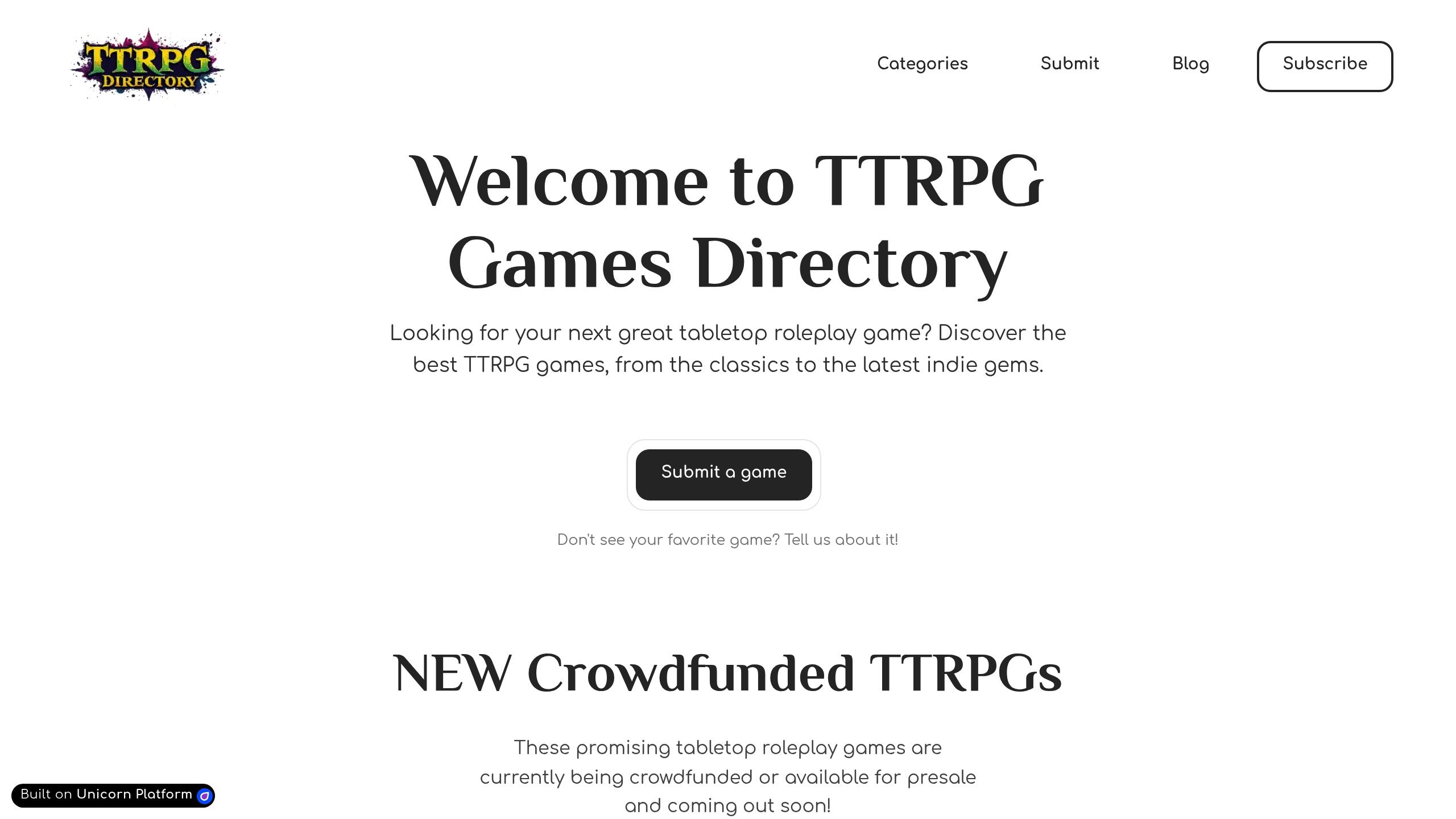Timed missions in RPGs create urgency, push players to make quick decisions, and add emotional stakes. They make gameplay more dynamic by introducing real consequences for delays, encouraging resource management, and simulating high-pressure scenarios. Here's why time limits work and how to use them effectively:
- Why They Work: Time pressure grabs attention, builds teamwork, and creates memorable moments.
- How to Use Them: Set realistic deadlines, use timers (sand timers, digital apps, etc.), and tie time constraints to the story.
- GM Tips: Signal urgency with environmental cues, NPC reactions, or resource depletion. Use tools like pause tokens or checkpoints to balance tension and fun.
- Common Mistakes: Avoid overusing time limits or setting unfair deadlines. Tailor challenges to the group’s experience level.
Time limits, when used thoughtfully, enhance storytelling and keep players engaged. They’re a powerful tool for creating unforgettable RPG moments.
Managing Time While Running Your D&D Games
Creating Effective Time Limits
Time limits in games should strike a balance between being challenging and fair. This encourages players to think creatively while also building their confidence. A well-designed time limit adds tension, especially in missions where timing is crucial.
Setting Realistic Deadlines
Start by estimating how long a task would take under ideal circumstances. Then, adjust based on the players' experience level. For beginners, offer more generous deadlines, while seasoned players can handle stricter ones. Take into account how complex the task is and whether players need extra time to understand rules. Once the deadlines are set, make sure time itself plays a role in shaping the story.
Tying Time to Gameplay
Time limits should have a noticeable impact on the story and gameplay. As the clock ticks, introduce new challenges, shift conditions, or alter how NPCs interact with players. These changes should directly affect mission objectives, giving players clear feedback on how their time management influences the game.
Adding Time Limits to Your RPG
Introduce time limits to your RPG by using effective tracking tools and making small rule adjustments. This approach can create a sense of urgency and excitement without disrupting the flow of the game.
Time Tracking Tools
Timers - both physical and digital - are a great way to add pressure. A sand timer offers a constant visual reminder, while chess clocks allow precise timing for encounters. Smartphone apps can manage longer missions with added flexibility.
| Tracking Method | Best Used For | Benefits |
|---|---|---|
| Sand Timer | Short challenges (1–5 min) | Keeps players focused with a visible countdown |
| Chess Clock | Encounter rounds | Provides precise timing and pause options |
| Digital Timer | Extended missions | Offers customizable alerts and displays |
| Initiative Cards | Turn-based sequences | Simplifies tracking player turns |
Once you select the right timing method, the next step is to tweak your game rules to make these tools feel natural within the story.
Modifying Game Rules
Adjust your mechanics so time limits fit seamlessly into the gameplay. For example, create encounters where the passage of time directly affects the plot. Use clear cues to signal urgency and encourage quick decisions. These adjustments should feel natural and avoid disrupting the game’s balance. Be sure to explain any changes to the players so everyone stays on the same page.
sbb-itb-b8b00a5
GM Tips for Time-Limited Missions
Adding time constraints to missions can create a sense of urgency and drive, but it’s important for GMs to balance that tension with player enjoyment. Here are some ways to keep the narrative exciting and the players engaged.
Signaling Time Pressure
Use storytelling and game mechanics to make the urgency clear:
| Signal Type | Description | When to Use |
|---|---|---|
| Environmental | Crumbling walls, rising water, spreading fire | When physical dangers need immediate reactions |
| NPC Reactions | Guards changing shifts, reinforcements arriving | For social or combat scenarios with consequences |
| Mechanical Effects | Increasing difficulty checks, accumulating damage | To heighten strategic challenges over time |
| Resource Depletion | Dwindling supplies, fading light sources | In survival-focused situations |
You can also introduce escalating consequences at regular intervals. For example, during a heist, every 10 minutes could bring changes like new guard patrols, updated security systems, or shifting NPC movements.
Keeping the Mission Dynamic
Here are a few techniques to maintain the energy and flow of time-limited missions:
1. Time Bank System
Give players 3-5 pause tokens per mission. Each token allows for a 2-minute break to discuss strategy out of character. This helps avoid overthinking while keeping the game moving.
2. Checkpoint Management
Divide longer missions into clear phases with checkpoints. At each checkpoint, you can:
- Let players regroup quickly
- Provide feedback on how much time remains
- Show the consequences of their progress so far
- Tease upcoming challenges
3. Adjusting Difficulty Dynamically
Adapt the timing based on how players are doing:
- If they’re struggling, grant them an extra 2-3 minutes after failed attempts.
- If they’re moving too quickly, add new obstacles or complications.
- For key story moments, briefly pause the timer to allow for important revelations or decisions.
These tips help keep the pace exciting while giving players a fair shot at success.
Common Time Limit Mistakes
Time limits can add tension and excitement to gameplay, but if used poorly, they can lead to frustration and reduce the fun. Let’s look at how to avoid common mistakes when implementing them.
When to Use Time Limits
Choosing the right moments for time limits is essential, but so is making sure they feel fair. Here are some scenarios where time limits can work well:
- Combat Encounters: Use time limits sparingly, such as when reinforcements are on the way or a critical ritual is underway.
- Investigations: Apply limits only when evidence or leads are at risk of disappearing.
- Social Interactions: Deadlines can add tension to negotiations or diplomatic challenges but should feel natural.
- Exploration: Time limits make sense in situations involving environmental hazards or immediate danger.
Setting Fair Time Limits
To keep time limits engaging rather than frustrating, follow these strategies:
- Match the time limit to the complexity of the mission, leaving room for both planning and execution.
- Include a small buffer to account for unexpected player actions or the need for quick clarifications.
- Tailor the time limit to the group’s experience - newer players may need more time, while seasoned players might enjoy a tighter challenge.
The aim is to create a sense of urgency that enhances the experience without making players feel rushed or overwhelmed.
Conclusion: Time Limits as a Game Tool
Time limits turn encounters into intense, high-pressure challenges, keeping players deeply engaged. As discussed earlier, when used thoughtfully, they raise both the tactical and emotional stakes in RPG encounters.
Strategic Use
Well-designed time-limited missions connect seamlessly with the story. For example:
- Stopping a ritual before it's completed
- Defusing a bomb in a hostage situation
- Escaping before enemy reinforcements arrive
- Wrapping up a diplomatic negotiation within a strict timeframe
This connection between narrative and mechanics ensures the challenge feels natural and fair.
Finding the Right Balance
The success of time limits depends on factors like your group's experience, the complexity of the task, available resources, and the presence of alternative solutions. A well-balanced time limit pushes players without making the game feel unfair, creating moments they'll remember long after the session ends.
Why Players Love It
Time limits add depth to gameplay by:
- Bringing high-tension moments that stick with players
- Rewarding smart resource management
- Encouraging quick decisions and teamwork
When paired with resource management, skill challenges, or social encounters, time limits can ramp up tension without overwhelming the group.
For inspiration, check out how different RPG systems handle time limits on TTRPG Games Directory. When the pressure feels fair and fits the story, timed missions can deliver some of the most unforgettable moments in your campaign.
Find More RPG Systems on TTRPG Games Directory

Looking to add more tension to your campaign? Check out the TTRPG Games Directory, a curated hub of both classic and indie tabletop RPGs that focus on time-based challenges. Each listing includes detailed descriptions of mechanics and gameplay features, making it easier to find the perfect fit for your game.
Browse by Category
The directory organizes games into categories, spotlighting those with time-focused mechanics. Each entry provides:
- A breakdown of core mechanics and gameplay systems
- Details on themes and storytelling styles
- Key features that set the game apart
Stay Updated
Sign up for the weekly newsletter to get news on the latest RPG systems with time-based gameplay elements.
For Game Creators
If you’ve created a game with time mechanics, you can list it on the directory through two options:
- Free Listing: Includes basic game information
- Premium Listing ($25): Offers better visibility, a DoFollow backlink, and newsletter inclusion
The TTRPG Games Directory is your go-to resource for finding systems that bring time-limited gameplay to life. Add these to your campaigns to intensify the sense of urgency and excitement.


